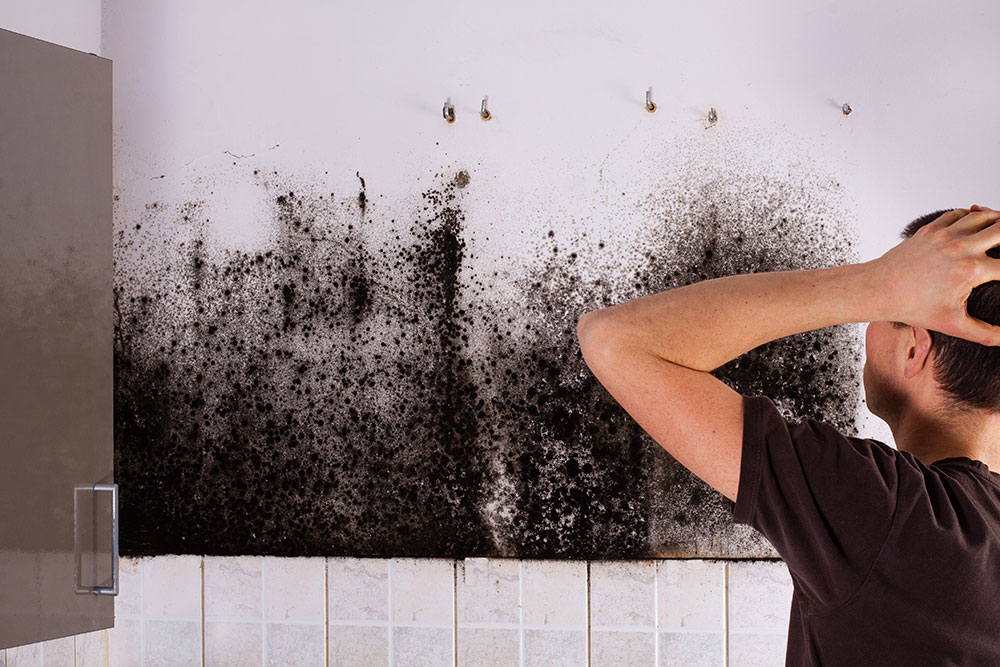Welcome back to Disaster Response’s blog! In our last blog post, we discussed black mold and the common places that mold can grow in the bathroom, solutions to getting rid of mold, and what to do if you feel your bathroom of your home has been taken over by black mold. Mold can occur in anyone’s home, but if mold is allowed to stay long enough to call your home its residence, then you have a problem. Another common place that mold can grow is in the kitchen due mostly to the fact that mold thrives in moist, warm areas. Here are some of the places that mold can thrive in our kitchens.
The Kitchen Sink
The kitchen sink is a place where mold and other nasties tend to congregate. Not only is there always plenty of water for mold to live off of, but there is often residues from food that act as beacons to mold, calling it to come and colonize your sink. Sponges and wet washcloths can always be catalysts for mold, as well. Often simply applying a bit of cleaner and elbow grease to your sink will get rid of mold. However, if mold seems to be growing and isn’t cleared by cleaning or it has taken up residence under your sink, then you may have a problem such as a leaky pipe and taking care of fixing the leak is priority number one if you want to avoid further damage.
Refrigerator & Pantry
Your fridge and pantry are places in which mold can get out of hand fast. Old food and produce going bad can be the perfect place for mold to grow, especially if the area becomes moist. The drip trays in your fridge, as well as the water dispenser can also become good ol’ stomping grounds for mold as well. With food, water, and darkness, the fridge and pantry can be one of the first and most frequent places to find mold.
Microwave & Stove
You would think that the microwave or stove would be uninhabitable for the likes of mold. However, mold can definitely be found colonizing your microwave and stove area. How? Glad you asked! Food, grease, and other such substances are a plenty here, giving mold what it needs to feed until you take away its food source.
Miscellaneous Hiding Places
Mold loves your kitchen especially when there are so many places and opportunities to thrive. Wood cutting boards and wood-handled knives, trash cans, behind appliances such as the oven, windows and window sills, and any other place where there is food, moisture are places where mold might call home in your kitchen.
How Do I Keep My Kitchen Mold Free?
In many cases, simply having a regular cleaning routine can route most mold. Yet, there may need to be extra precautions. Here are some ways to keep mold at bay.
- Open a window or use the fan when cooking to allow for proper ventilation and to avoid too much humidity gathering in your kitchen.
- Do the dishes or regularly utilize your dishwasher to avoid pooling water and decaying food in your sink.
- Clean and clear out your your fridge, pantry, and fruit bowl regularly to avoid moldy old food and be sure to clean your drip trays and water dispensers regularly.
- Take the trash and recycling out regularly and even consider cleaning your trash can with cleaner.
Mold can sometimes be a part of life if we grow lax and forget to take the trash out or forgo washing the pile of dishes accumulating in and around your sink. However, mold should never be allowed to grow—especially black mold which can be incredibly toxic to your health and anyone’s health that spends time in your home. If you clean your home and are still struggling with mold or have recently had a leaky pipe, you may need to call for mold testing and possibly mold removal. Mold can grow in the walls and other structures of your home and slowly endanger your health and compromise the structure of your home.
If you need water damage restoration, mold testing, and mold removal call Disaster Response! Our caring and professional mold remediation teams can have your home mold-free in no time. Visit our website!

